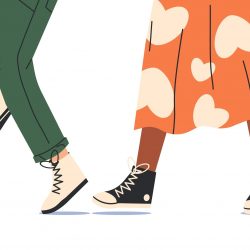Pain is a sensory and emotional experience
The International Association for the Study of Pain (IASP) define pain as:
‘An unpleasant sensory and emotional experience associated with, or resembling that associated with, actual or potential tissue damage,’
and they expand on this with the addition of six key Notes:
- Pain is always a personal experience that is influenced to varying degrees by biological, psychological, and social factors.
- Pain and nociception are different phenomena. Pain cannot be inferred solely from activity in sensory neurons.
- Through their life experiences, individuals learn the concept of pain.
- A person’s report of an experience as pain should be respected.
- Although pain usually serves an adaptive role, it may have adverse effects on function and social and psychological well-being.
- Verbal description is only one of several behaviors to express pain; inability to communicate does not negate the possibility that a human or a nonhuman animal experiences pain.
Pain is a personal experience. If two of us put our fingers on the same hot pan then I’m certain we would experience different levels and sensations of pain, according to our own unique physiology, genetics, psychology and life experiences.
Unfortunately there is no way we can reliably measure the experience of pain each person feels. We don’t have an electronic gadget that can record the levels and quality of pain in each person and compare the two. Neither can we measure the emotional experience of pain. Instead we are reliant on subjective personal statements made about our pain.
When I think of pain as being a purely personal experience I think of how personal an experience happiness also is. I can watch a school play, and listen to a young person sing, and feel absolutely overwhelmed with happiness. The person next to me however may have a different experience. They may not be bothered about it at all, and some people may even cringe. In my day to day life I experience episodes of happiness, and sadness, at varying levels. Of course, just like pain, I have no idea if the happiness I feel is the same as somebody else would feel. I have no way of knowing, but I doubt it very much. Just like pain, I believe happiness is a purely personal experience, and one that can’t be reliably quantified and compared.
A number of years ago I travelled the country delivering training courses to teachers and teaching assistants about autism. As part of the training I played a very short video which a person with autism had created to illustrate how a person with autism may experience the world differently to a neurotypical person. The video is split in two parts. It first provides an impression of what a neurotypical person might experience as they walk down a street, and then it looks at what a person with autism may experience walking down the same street. The difference is striking and although it is not a very sophisticated video it was one that really made people think. This is the video.
Whenever I watch, or even think about, this video I am reminded that not everyone ‘experiences’ the world in the same way that I do. This I am sure also goes for pain. My experience of pain, even given the same inputs such as the same hot pan, will be different to yours.
The pain I experience is unique and personal to me. It evolves from my unique personal physiology, including any injury or disease, my genetics, my past experiences of pain, my beliefs about pain and my fear and anxiety, and my current and past life experiences. My pain varies over time, very much depending on what has happened to me, what I am doing and what I am thinking and feeling.
Pain is a sensory and emotional experience, and my personal experience of pain is affected by who I am, what I feel, what I do and what’s physically going on for me.






